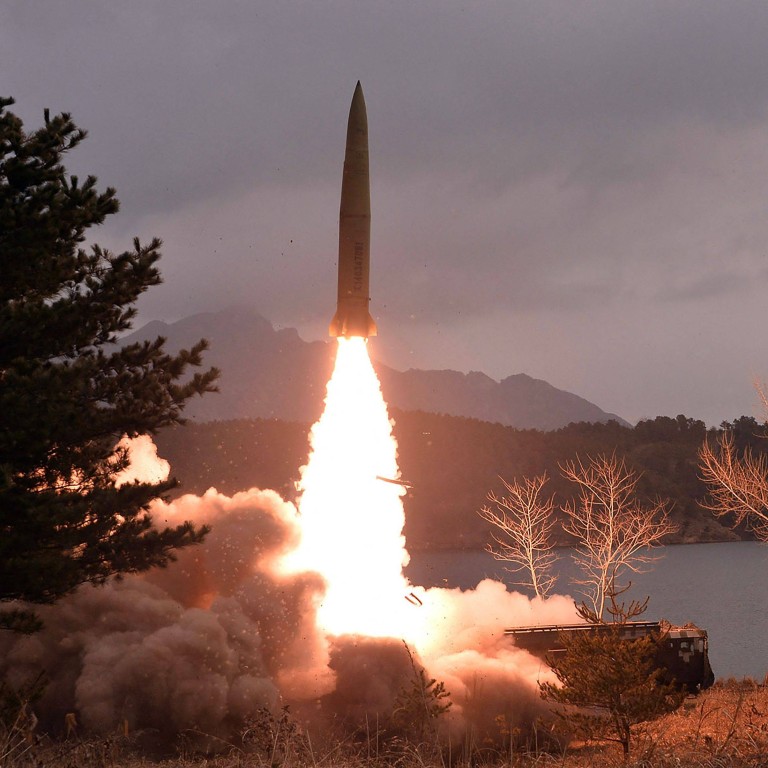
North Korea says missile test-fired over Sea of Japan was an ICBM, state news reports
- The Hwasong-17 missile was fired amid ‘provocative and aggressive’ joint military drills conducted by the US and South Korea, news agency KCNA said
- The launch was North Korea’s third show of force since Sunday and took place as South Korean President Yoon Suk Yeol headed to Japan to boost ties

The drill “serves as an occasion to give a stronger warning to the enemies intentionally escalating the tension in the Korean peninsula,” KCNA reported.
Pyongyang said the missile travelled at a maximum altitude of some 6,000km (3,700 miles) and flew some 1,000km (620 miles) “before accurately landing on the preset area in the open waters off the East Sea of Korea,” also known as the Sea of Japan, according to the KCNA report.
The South Korean government said the missile was fired on a lofted trajectory – up instead of out, typically done to avoid overflying neighbouring countries.
Seoul and Washington have ramped up defence cooperation in the face of growing military and nuclear threats from the North, which has conducted a series of increasingly provocative banned weapons tests in recent months.
How better South Korea-Japan ties could weaken a China-centric supply chain
The Freedom Shield exercises focus on the “changing security environment” due to North Korea’s redoubled aggression, the allies have said.

.png?itok=arIb17P0)